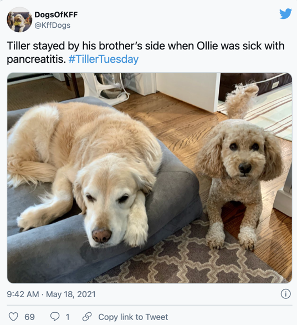“Trendy” may not be the first (or even third) word that comes to mind when describing the field of science. However, science companies certainly aren’t an exception to the benefits that can come from innovative marketing approaches. For example, other industries have been quick to capitalize on the increased use of social media and the emphasis on personalization and humanization social helps foster.
The marketing tactics they use could be readily adopted by science companies, too. Here, we’ll review four marketing tactics that science companies should apply to their own efforts.
Leverage the power of influencers
Influencer marketing has exploded across industries, but it isn’t just for Kardashians. Scientists are people, and they have affinities for certain individuals and voices just like anyone else.
The increased use of social media, particularly TikTok, has expanded the platform of “everyday influencers.
And so the increasing presence of scientists and health professionals on social media presents a valuable opportunity for companies to partner with real thought leaders who use their products and services (and like them enough to talk about them).
On Instagram and TikTok, many products have been marketed through “how-to” videos from popular influencers, and there’s a huge appetite for them.
A May 2020 survey of social media influencer followers in the U.S. and U.K. found that “how-to tutorials” were the most requested content type.
While there aren’t many “celebrity” scientists, science and medicine accounts have gained a sizeable following on platforms like TikTok (as CE&N reported last February) and many already incorporate walkthroughs of experiments and protocols.
Partnerships with science content creators present a great avenue for marketing science products these individuals already use, or would like to try.
For example, inviting a science influencer to provide a review of a new lab product, or a demo of their favorite product from your brand, on TikTok in exchange for free or discounted products could leverage their existing following to market your brand. Look for authenticity in the partner you choose (your brand shouldn’t come out of left field) and disclose all partnerships with your audiences.
Use remarketing and retargeting to stick with potential customers
General consumer marketing shows us the value of retargeting and remarketing. These strategies are a particularly cost-effective way to increase sales conversions, as it involves reaching out to customers who have already expressed interest in your products or services.
While these two terms are often used interchangeably, these digital marketing tactics do have some key differences.
Retargeting is the targeted presentation of advertising material through browser cookies to consumers who perhaps made a search or checked out a product on your website, but likely didn’t make a purchase. This strategy isn’t completely novel to science companies – scientists are used to seeing sidebar ads for whatever antibody, assay kit, or surgical tool they’ve searched for that week. However, these ads are still less prevalent than those for other products they might peruse while waiting for the thermocycler to finish, such as clothing or household items.

Remarketing is a similar approach but uses email messaging to reach prospective customers who have interacted with your site, or re-engage previous customers in your database. We’ve all succumbed to the email offering free shipping or 20% off on our abandoned online shopping cart, so science companies would be wise to implement these strategies more often.
Think about tying order history to an automatic email campaign, like a promotion for laboratory consumables sent to contacts who haven’t placed an order in the last few months.
Think outside the box with social media
Science marketing is by no means new to social media, but posting product updates and links to interesting articles isn’t the only way to operate in this field. More and more, companies across industries are taking their social media marketing tactics outside the box and showing a lighter side of their brand identity.
One of the most well-known examples of this approach comes from the corporate Twitter account for Denny’s. It may seem ridiculous to suggest that innovative science companies can learn something from a 24-hour diner whose reputation is based on late-night shenanigans over affordable pancakes, but hear us out. What sets Denny’s Twitter apart is that it’s…well, weird. Much like the atmosphere of a Denny’s, it doesn’t take itself too seriously and captures the kind of wackiness one might experience with those late-night pancakes.

Denny’s award-winning Twitter presence set an example for other fast-food restaurants’ social media accounts, many of which now lean towards this same strange brand of humor, and successfully created a brand identity that spoke to meme-loving social media users.

With nearly 470,000 followers and nearly 4 million profile visits, Denny’s Twitter is fresh and fun to follow. The account has also run some high-profile giveaways of limited-edition merchandise, such as this COVID-friendly bacon mask from May 2020.
While this example may be a little too far outside the box for science companies, it makes an important point: even if your social media content doesn’t directly reflect details of your business, you can still make your brand memorable and likable.

A more suitable example is the affiliate Twitter account of the Kaiser Family Foundation, Dogs of KFF (@KFFDogs).
The Kaiser Family Foundation is in no way affiliated with dogs, but it is a human-focused organization. Dedicating a social media account to show off employees’ dogs humanizes KFF’s brand, which can really pay off.
This brings us to our last point…
Humanize your brand
While the science industry can often be technical and dry, the end products our companies produce are not — they’re often aimed at making lives easier, healthier, and better, and scientists are people motivated by these very human things.
Marketing science in a way that gets at the sincere core of this mission produces some of the most memorable campaigns.
A recent example of this approach is a commercial for Google’s live caption feature on Google Meet. The ad is narrated by a self-described “coda,” or “child of deaf adults”, unable to visit with his elderly parents during the COVID-19 pandemic, and shows how assistive technology in Google Meet’s video calling has deepened his parents’ ability to communicate with him and their newborn grandson.
Captioning software is conceptually quite dry, but seeing grandparents witness milestones in their grandson’s life despite being separated – both by hearing and a global pandemic – is heartwarming, and clearly demonstrates why this technology is so important.
Marketing science with content that shows the human side of a brand makes consumers feel connected. Who are the scientists, engineers, and manufacturers behind a company, and what motivates them to create their products? What larger goal does a company’s product contribute to or make possible for other humans? Studies show that innovation and sustainability were found to be the two leading factors in purchasing decisions in our industry. Tell your audience what you’re doing in these areas.
Narrative approaches like these are common in consumer marketing, but could also be readily adopted in science marketing to show the meaning in the work these companies do. What is your story?
Put these strategies to work for your science brand
An evolution in the ways consumers connect with brands, products, and one another has paved the way for a host of effective marketing strategies. Insights from web marketing technology enable greater personalization in content, and the increased use of social media by brands offers new avenues for human connection. While it may feel strange for some science brands to implement some of these trendy marketing tactics, remembering the human side of their brand and audience – and maybe taking themselves a little less seriously – can build refreshing strategies that pay off.


















